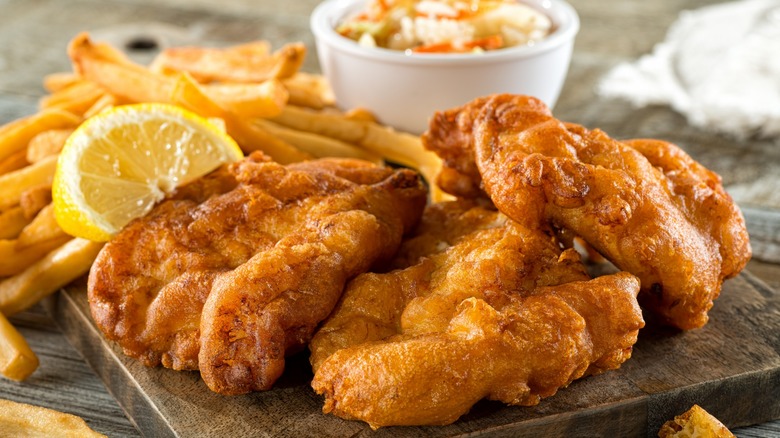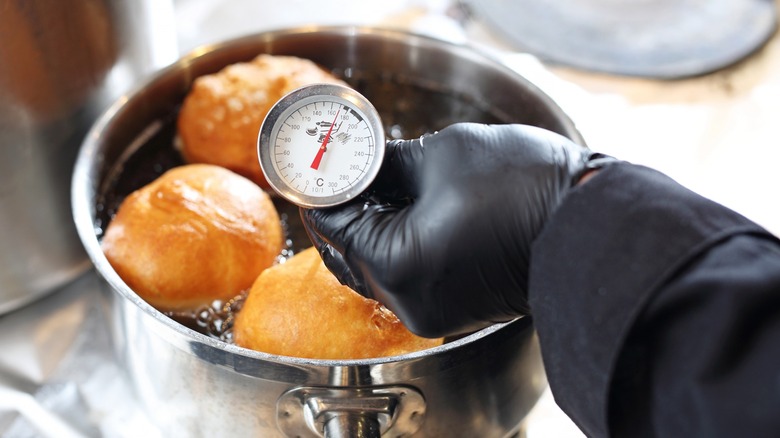Here's Why Your Fried Food Didn't Fully Cook On The Inside
The allure of deep frying lies in its transformative power — turning simple ingredients into crispy, indulgent masterpieces. Whether it's the delicate crunch of calamari rings, the comforting warmth of classic french fries, or the guilty pleasure of deep-fried Oreos, this technique has carved out its place in kitchens around the world. However, preparing the perfect deep-fried food may not be as simple or easy for all cooks, especially if you've ever ended up with a dish that's undercooked on the inside. So what's the culprit? Often, it's an excessively high cooking oil temperature.
On every fried food recipe, there should be an optimal frying temperature range indicated. And while achieving that particular heat level to create the perfect fried texture might seem like a matter of intuition, the science behind it is grounded in precision. A common misconception is that hotter oil equates to quicker cooking. That's not exactly the case; it's a delicate balance since, on one hand, high oil temperatures are actually necessary for the food to brown and crisp on the outside. But on the other hand, an excessively high temperature causes the exterior to harden too rapidly, creating a barrier that hinders heat from penetrating deeper layers. Consequently, the food's interior remains undercooked even as the exterior achieves the desired crunch. The solution? Embracing the humble kitchen thermometer as a trusted cooking ally.
Extreme oil temperatures can be tamed by using a thermometer
By incorporating a simple thermometer into the frying process, you can ensure the oil maintains an optimal temperature, yielding impeccable results every time. Begin by heating the oil to the recommended starting temperature in the recipe. Once the oil is ready, the thermometer becomes the guiding light.
A gentle dip into the oil allows you to monitor its temperature accurately. For example, once you add the food to the oil, there's bound to be a temperature drop since the ingredients are cold. To counter this, you'll need to dial up the stove slightly. With your trusty thermometer on hand to monitor the temperatures, these adjustments can be made as necessary, ensuring a consistent and controlled cooking environment.
So, the next time you want to whip up a tasty fried dish, remember the thermometer is your culinary compass, steering you away from the treacherous waters of unevenly cooked foods and towards crispy, golden-brown exteriors paired with tender, succulent interiors — the hallmark of a perfectly fried dish.

